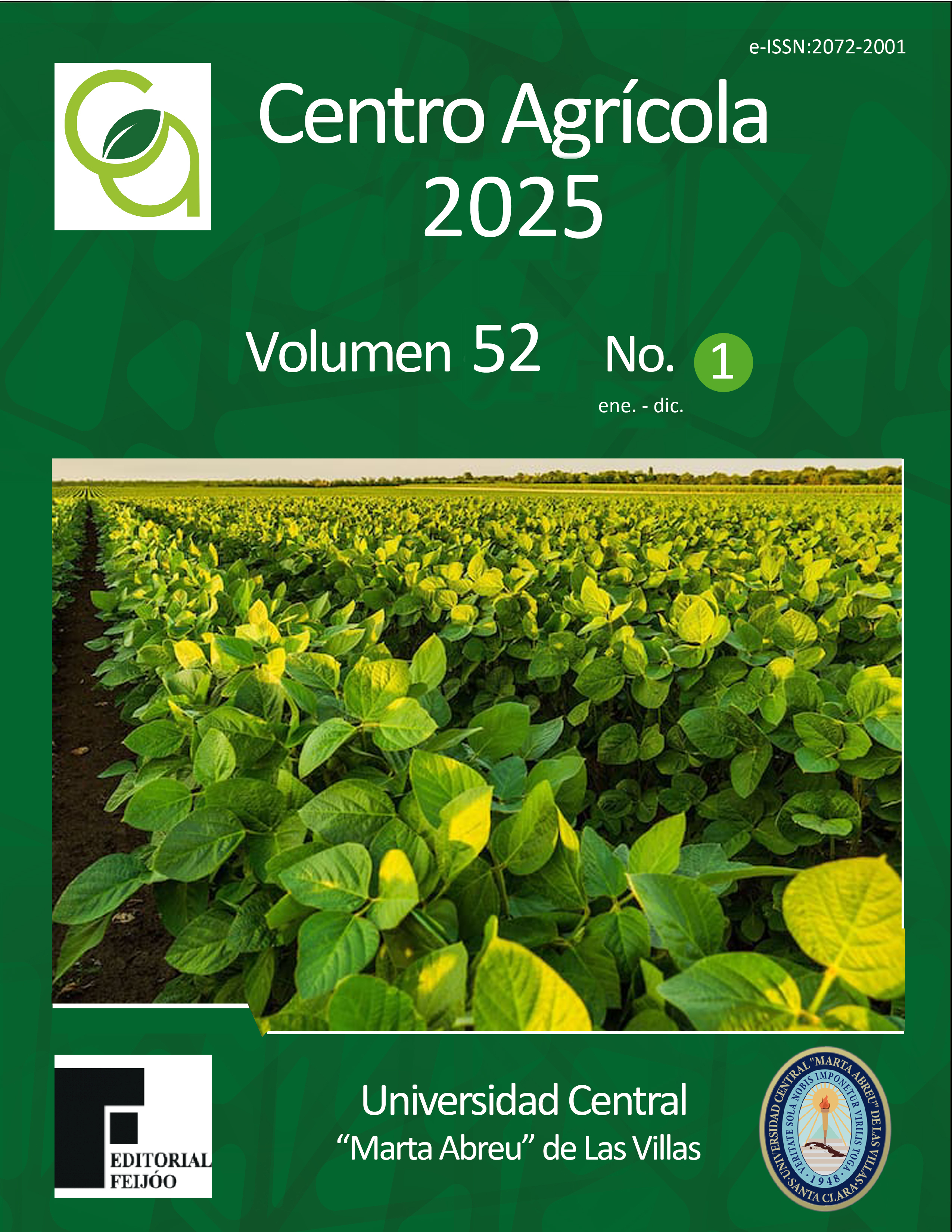CF: cag034222381
ARTÍCULO DE INVESTIGACIÓN
Uso de zeolita y estiércol vacuno para mejoramiento del suelo e incremento del rendimiento pecuario
Use of zeolite and cattle manure for soil improvement and increase of livestock yield
Wilfredo Espinosa Aguilera1*
Tuly Díaz Ercia2
Osvaldo Arteaga Rodríguez1
1 Unidad Científico Tecnológica de Base, Instituto Nacional de Suelos, Cienfuegos, Cuba
2 Centro Universitario Municipal de Manicaragua, Universidad Central “Marta Abreu” de Las Villas, Cuba
*Correspondencia: Esta dirección de correo electrónico está protegida contra spambots. Usted necesita tener Javascript activado para poder verla.
RESUMEN
Debido a lo compactado que queda el estiércol vacuno en las vaquerías, se usa muy poco en las áreas de pastos y forrajes por lo que se obtienen bajos rendimientos agrícolas y producción de leche. Este trabajo se desarrolló durante cinco años en cinco vaquerías de la Empresa Pecuaria “El Tablón”, Cienfuegos mediante la fabricación y aplicación al suelo de abono organomineral natural (Zeofert) con el objetivo de incrementar el rendimiento de los pastos y forrajes. Para la preparación del Zeofert se utilizaron las excretas vacunas frescas depositadas por los animales sobre el piso de las naves de sombra y se mezcló con partículas de 1-3 mm de roca zeolítica natural (Fertisol). El abono descompactado obtenido (2 362 t) se aplicó manualmente en 94,5 ha de pastos y forrajes a una dosis de 25 t ha-1. Los resultados mostraron que la aplicación del Zeofert al suelo incrementó significativamente el rendimiento de Panicum maximum Jacq. cultivar ‘Común’ (pasto natural) y P. maximum cultivar ‘Likoni’ (pasto guinea) en un 52 % y de Pennisetum purpureum Schum. (king grass) cultivar ‘CT-115’ en un 77 %, mientras que se incrementó la producción de leche en un 20 %, todo respecto al control. Fue restablecido el retorno de nutrimentos al suelo, con incremento significativo de los contenidos de P2O5, K2O, materia orgánica y los valores de pH. Se sustituyó el uso de 99, 124 y 116 t de NH4NO3, supersulfato sencillo y KCl como fertilizantes químicos equivalentes, respectivamente. Se recomienda la utilización de esta tecnología en aquellas unidades que tengan ganado vacuno en condiciones estabuladas o semiestabuladas.
ABSTRACT
Due to the compacting of cow manure in dairy farms, it is rarely used in the pasture and forage areas, resulting in low agricultural yields and low milk production. This work was developed during five years in five dairy farms of the “El Tablón” Livestock Enterprise, Cienfuegos, through the manufacture and application to the soil of natural organo-mineral fertilizer (Zeofert) with the objective of increasing the yield of pasture and forage. For the preparation of Zeofert, fresh cow dung deposited by the animals on the floor of the shaded sheds was used and mixed with 1-3 mm particles of natural zeolitic rock (Fertisol). The obtained de-compacted manure (2,362 t) was applied manually on 94.5 ha of pasture and forage at a rate of 25 t ha-1. The results showed that the application of Zeofert to the soil significantly increased the yield of Panicum maximum Jacq. cultivar ‘Common’ (natural grass) and P. maximum cultivar ‘Likoni’ (guinea grass) by 52 % and of Pennisetum purpureum Schum. (king grass) cultivar ‘CT-115’ by 77 %, while milk production was increased by 20 %, all with respect to the control. The return of nutrients to the soil was restored, with a significant increase in the contents of P2O5, K2O, organic matter, and pH values. The use of 99, 124, and 116 t of NH4NO3, simple supersulfate, and KCl were substituted as equivalent chemical fertilizers, respectively. The use of this technology is recommended in those units that have cattle in stabled or semi-stabled conditions.



